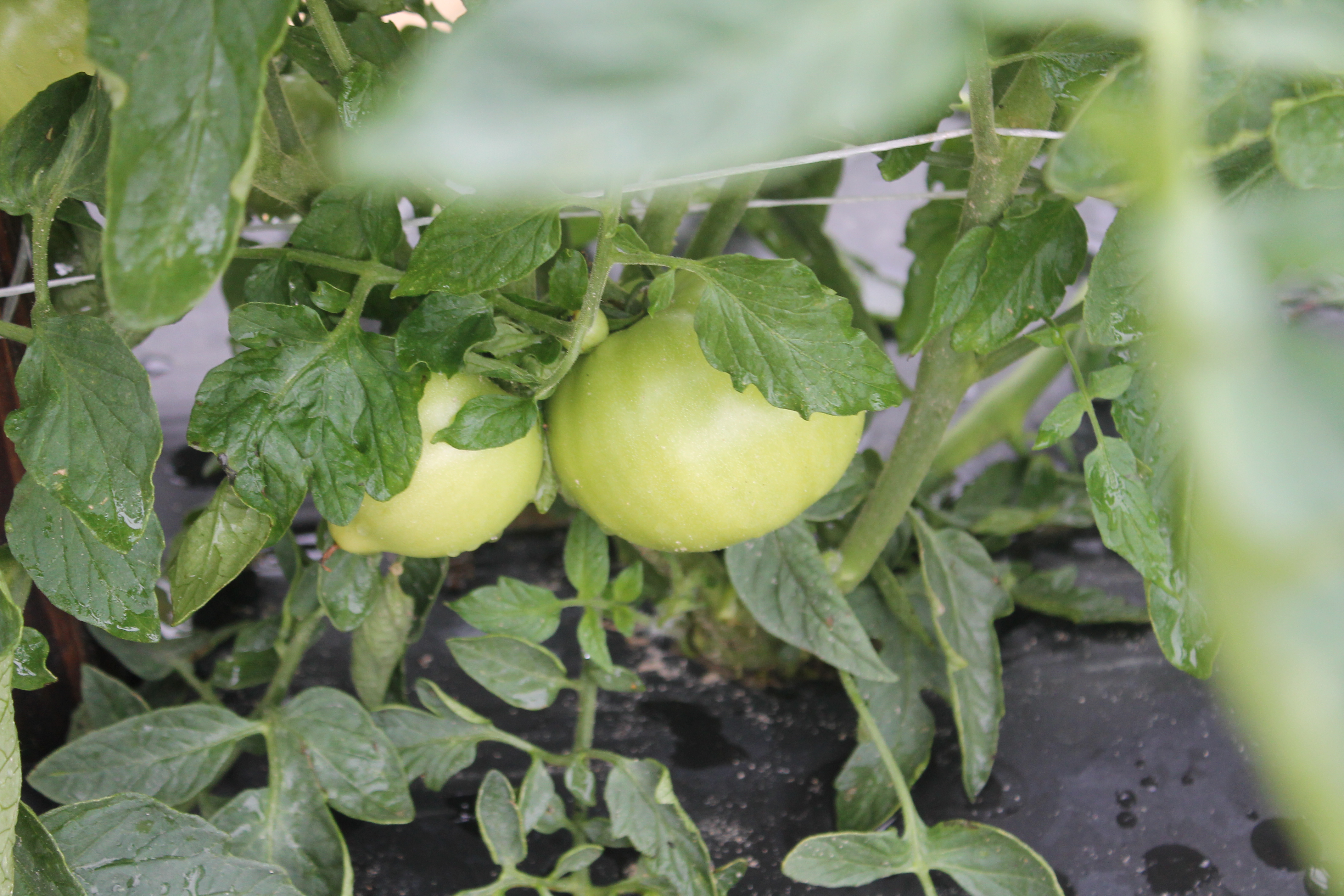
by Eddie Powell | Jun 10, 2015
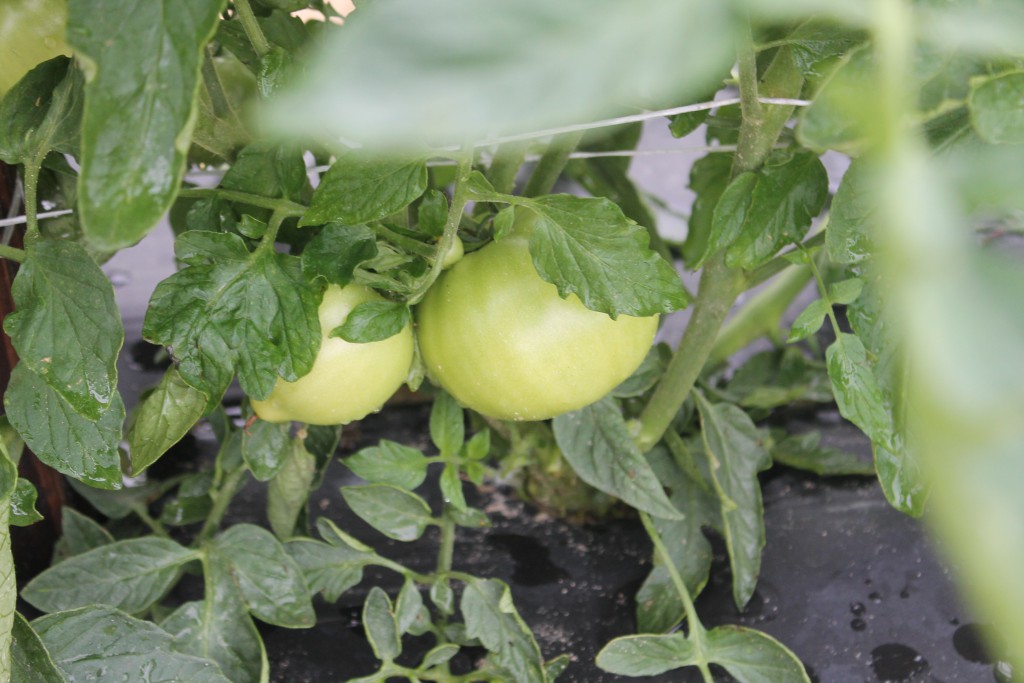 During this growing season, monitor your plants to keep them healthy. Healthy plants will be able to survive pest attacks better.
During this growing season, monitor your plants to keep them healthy. Healthy plants will be able to survive pest attacks better.
Nematodes are microscopic worms that attack vegetable roots and reduce growth and yield. Nematode populations can be reduced temporarily by soil solarization. It is a technique which uses the sun’s heat to kill the soil-borne pests. Also, adding organic matter to the soil will help reduce nematode populations. The organic matter will also improve water holding capacity and increase nutrient content.
If you choose to use pesticides, please follow pesticide label directions carefully. Learn to properly identify garden pests and use synthetic chemicals only when a serious pest problem exists, or a history of a particular problem exists at your site. Organic gardeners can use certain products like BT (Dipel) to control pest. Please remember not every product is for use on every crop, so be sure the target crop is listed on the label before purchasing the product. Follow label directions for measuring, mixing and pay attention to any pre-harvest interval warning. The pre-harvest interval is the time that must elapse between application of the pesticide and harvest. For example, broccoli sprayed with carbaryl (Sevin) should not be harvested for two weeks after application.
Pesticide application techniques:
- Spray the plant thoroughly, covering both the upper and lower leaf surfaces.
- Do not apply pesticides on windy days.
- Follow all safety precautions on the label, keep others and pets out of the area until sprays have dried.
- Apply insecticides late in the afternoon or in the early evening when bees and other pollinators are less active.
- To reduce spray burn, make sure the plants are not under moisture stress.
- Water if necessary and let leaves dry before spraying.
- Avoid using soaps and oils when the weather is very hot, because this can cause leaf burn.
- Control slugs with products containing iron phosphate.
Many common diseases can be controlled with sprays like chlorothalonil, maneb, or mancozeb fungicide. Powdery mildews can be controlled with triadimefon, myclobutanil, sulfur, or horticultural oils. Rust can be controlled with sulfur, propiconazole, ortebuconazole. Sprays are generally more effective than dusts.
If you have questions please call your UF/IFAS county extension office. We can provide helpful information about insect and disease identification.
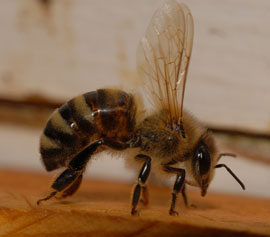
by Sheila Dunning | Apr 28, 2015
Bees have been disappearing at an alarming rate and continue to vanish without a trace. Why should anyone care? Well, they matter a lot more than most people think. Bees are the overwhelmingly dominant pollinator for most food crops. Native bees in the United States are responsible for pollinating over $15 billion worth of agricultural commodities annually. However, native bee populations are in decline due to habitat loss. At the same time, managed colonies of European honey bees have suffered a 50% decline over the past few decades. Numerous other pollinating insects are facing the same fate.

European honey bee. Photo credit: UF/IFAS.
As the spring planting season is upon us, it’s exciting to think about all the wonderful produce we will have this summer. But, without pollinators many of these crops would not be available. The majority of fruit and vegetable food sources we eat are dependent on insect pollinators. One of every three bites of food Americans consume comes from a plant visited by bees or other pollinators.
As declining numbers of farmers work to meets the need of increasing populations, they are forced to make choices on alternative to chemicals for pest control. “Good bug blends” of flowers can help attract pollinators as well as beneficial insects that suppress harmful pests. Establishment of these meadows can be done on a small or large scale and in any habitat. One approach to “bring back the pollinators” is to intercrop with blooming plants that attract insects. Selecting a diversity of plants with different flower sizes, shapes and colors, as well as various plant heights and growth habits, will encourage the greatest numbers of pollinators. It is important to provide a continuous source of pollen and nectar throughout the growing season. At minimum, strive for three species to be blooming at any one time; the greater the diversity the better.
To enhance the garden, choose flowering plants that also provide shelter for beneficial insects. Many companion plants are suitable habitat for predators and parasitoids. Research in Florida has demonstrated that predatory minute pirate bugs can build to high numbers in sunflowers. The favorite food of minute pirate bugs is Western flower thrips. So, planting sunflowers on the perimeter of vegetable crops, such as peppers, can greatly reduce the damage caused by the thrips. Similar results were found with the planting of sorghum to attract beneficial mites and intercropping with buckwheat to house syrphid flies and parasitoid wasps. The garden vegetables experienced fewer spider mite, whitefly and aphid problems. Crimson clover, Hairy vetch and cosmos are other annual seed crops that can aid in attracting pollinators and harboring beneficial insects.

Blue Mistflower. Photo Credit Mary Derrick, UF / IFAS Extension.
Insectary meadows can be created in the landscape and along roadways, not just in the garden. For more permanently planted areas, native wildflowers, grasses and woody plants serve as larval host plants for butterflies, and also provide nesting and overwintering sites for bumble bees, predacious beetles and other beneficial insects. Native perennial wildflowers such as blanketflower, tickseed, black-eyed Susan, partridge pea, narrowleaf sunflower, milkweed, beebalm, goldenrod and silkgrass can be installed in the spring as potted plants or seeded in the fall. Seeds require exposure to cold temperatures and damp conditions before germination can occur. In Florida, the best time is November to February.
Though grasses do not offer nectar or high-quality pollen, it is often useful to include at least one native bunch grass or sedge. Short, clump-forming grasses are preferable to large, spreading grasses. Hedgerow planting of woody species is a way to provide winter-blooming plants vital for supporting pollinators. Woody plants and grasses provide more than forage for pollinators, as many native bee species nest in the stems of plants or in the undisturbed ground underneath plantings. Suitable grasses include: beaked panicgrass, purple lovegrass, Muhly grass, broomsedge,little bluestem, wiregrass and toothache grass. Favored woody species that make good “beetle banks” include: fetterbush, American beautyberry, saw palmetto, Chickasaw plum, red maple, sparkleberry, Dahoon holly, redbud, blackgum, magnolia, buttonwood and sourwood.
Regardless of whether the objective is to establish herbaceous or woody vegetation, the time and effort spent on eradicating undesirable plants prior to planting will result in higher success rates in establishing the targeted plant community. Choose level, open sites that receive full sunlight and have limited weed populations. If perennial weeds are a problem, the use of herbicides that have no soil residual (e.g. glyphosate) may be necessary.
For more information on establishing planting for pollinators visit: www.xerces.org/pollinator.
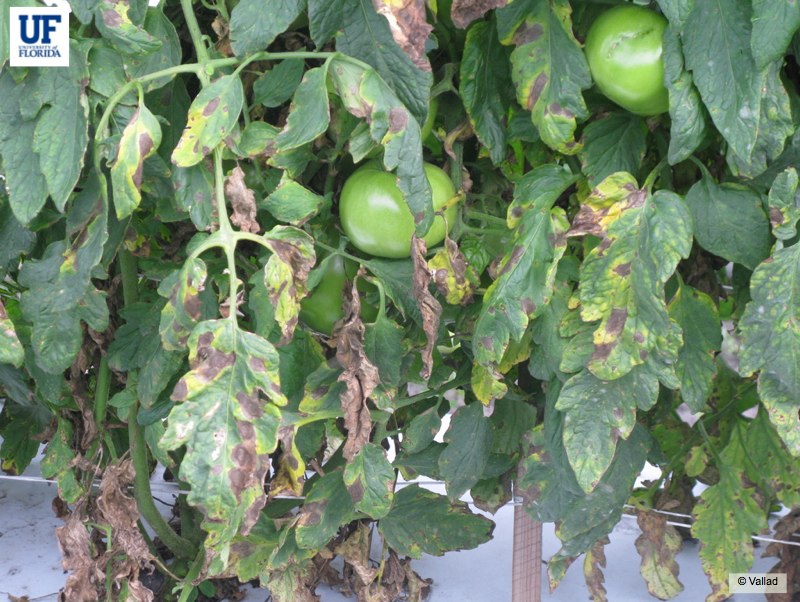
by Blake Thaxton | Apr 21, 2015
With the over abundance of rainfall the western panhandle has seen in recent weeks, tomato gardeners need to be aware of foliar diseases that could appear. Tomato leaves are an ideal host when moisture is present on the leaf surface. There are several of these diseases that, if not managed, can destroy the garden.
Early Blight

Advanced symptoms of Early Blight (Photo Credit: UF/IFAS U-Scout website)
Early Blight is a fungal disease that can affect tomato leaves and fruit. The disease is most prominent when temperatures are 80°F and excess moisture is present from rain or irrigation. The most classic system is the presence of leaf lesions that are approximately 1/2 inch in diameter.
Bacterial Spot
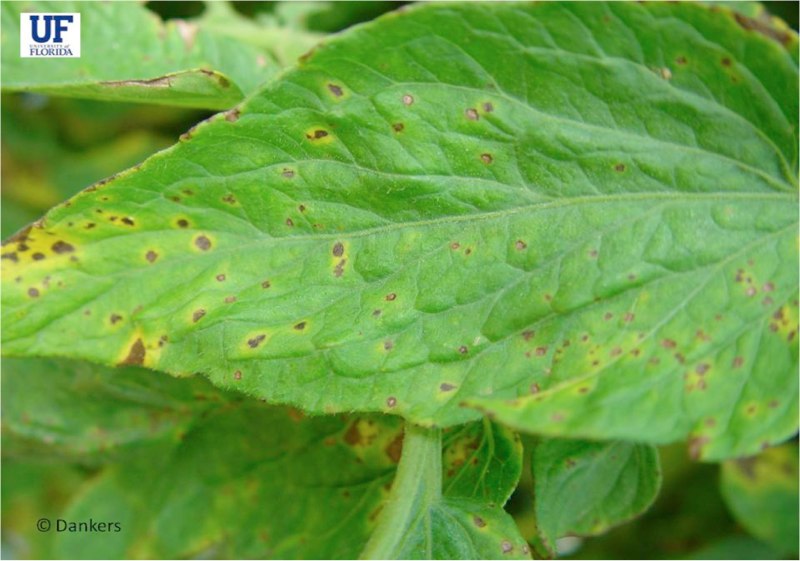
Bacterial Spot on a Tomato leaf (Photo Credit: Hank Dankers, From U-Scout)
Bacterial Spot can also cause problems for Florida tomato gardeners in rainy and high temperature periods. Generally the symptoms are darkened circular lesions on the leaves and fruit. Sometimes bacterial spot can be confused with other leaf lesion diseases. The bacterial spot will ooze when cut where as fungal type lesions will not.
How to prevent foliar diseases in tomato:
- Always start with disease free seed and transplants.
- Irrigate early in the day to minimize the time the leaves stay wet. Use drip irrigation when possible.
- Remove blighted leaves when the garden is dry. This technique should not be relied on exclusively.
- Remove and destroy crop residue at the end of the growing season. If not removed, it can become a breeding ground for disease next year.
- Rotate to different plant families that are not affected by the same diseases.
- Spray protective fungicides such as Mancozeb, Copper, and Chlorothalonil (for example sold as Daconil) when the conditions are right for disease (higher temperatures, excessive moisture, and rainfall).
If you have questions about these diseases or other tomato diseases, please comment below or call your local UF/IFAS Extension Agent.

by Eddie Powell | Apr 14, 2015
Growing wholesome, healthy vegetables in a container are a way of life these days. Here are some easy and less expensive tips for creating that bucket garden.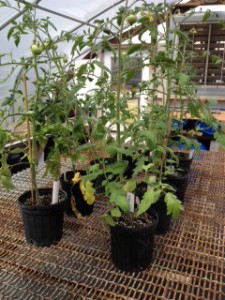
- In a large container or on a plastic mat on the ground, mix garden soil and compost in a 2:1 ratio. Two scoops of soil and one of compost, add the recommended quantity of slow release fertilizer from product label
- Drill 6 to 8- ½ inch holes in the bottom of the 5-gallon buckets. Make sure that the buckets did not contain toxic materials!
- Line the bottom of the bucket with gravel. You may substitute broken pottery or sticks that are broken in short links
- Fill the bucket to within 3 inches of the top of the container
- Place container in sunny spot that will allow drainage
- Plant chosen vegetable with two seeds in center of the container
- Water well and keep moist but not wet
- Place plant support around seeds
Plant requirements:
- Nutrients. Basic needs in plants are Nitrogen (N), Phosphorus (P), Potassium (K). These are listed on all fertilizers as a ratio, example – 8-8-8 contains 8% Nitrogen, 8% Phosphorus, and 8% Potassium and the remaining 76% is a filler. Soils contain many more trace minerals and they are listed on the fertilizer label including directions for use and amounts
- Sunshine or artificial sources of light (grow lights).
- Water. Soil must be kept moist but not wet. Wet soils will create root-rot and encourage fungus. Measure moisture by pinching the soil to see that the soil is moist but never wet. Adding water as needed; plants in hot areas will need much more water than plants in cool spots. Wilted plants need more water!
- Carbon Dioxide (CO2). Plants absorb CO2 and give off Oxygen making them VERY important to human and all animal life.
- Proper Temperatures. Plants will die when it is either too hot or too cold. Make sure that if your plants are outside and the temperature goes below freezing, the plants must be protected or brought inside.
Resources:
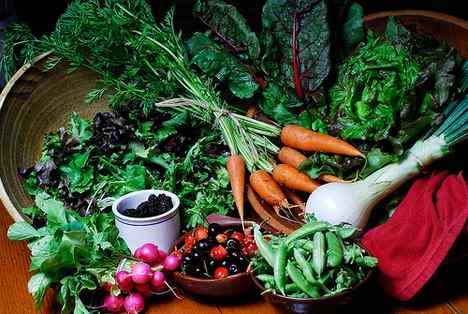
by Roy Carter | Sep 23, 2014
Healthful outdoor exercise, a feeling of accomplishment, and potential saving on the family food bill are good reasons why more and more Floridians are turning to home vegetable gardening.

Image Credit: FAMU
Usually, the most physically challenging part of a vegetable gardening project is to get the soil ready for planting. However, whatever you do, don’t give in to the temptation to cut corners on this phase of the operation. If you do a poor job of preparing the soil, you can expect poor results from your garden, even if you work hard on planting and cultivation. If you’re planning a large garden, you may want to rent a rototiller or even a small tractor and plow, to use in preparing the soil. But, for a small backyard garden, you can do the work with a spade or shovel.
The time to begin soil preparation depends to some extent on what’s growing on your garden site now. If you have heavy weeds, or a cover crop, you intend to turn under; you should start a month to six weeks before planting. This also is the time to add lime, if needed.
If you’ve kept the garden site fallow, or you plan to remove all vegetation and no lime is required, you could prepare the soil and plant within two or three days. However, if you plan to work extra organic matter into the soil before planting, you should start two or three weeks ahead of time.
To prepare the soil, dig down six to eight inches, and turn each shovelful completely over. If you’re turning in weeds, or a cover crop, you should remove all the woody plant material as it won’t decompose very well.
After the soil is turned, break clods and level with a rake. Do this as soon as you can, to prevent excess drying of the soil, and to keep good soil texture. This is important, because a finely pulverized soil surface will make planting easier, give you better seed germination and help insure a more even stand of vegetables. It’s especially important to have fine textured soil when planting small-seeded crops, like carrots.
In some soil, it’s also necessary to add some kind of liming material well before planting at the same time you turn the soil. Lime reduces soil acidity. Without going into a chemistry lesion, lime adds calcium to the soil and makes minor elements move available to plants. The most commonly used form of lime is dolomite. Besides calcium, dolomite provides magnesium another important plant nutrient. [important]You should add lime only when a soil test indicates the need for it. Too much can be as bad as too little. [/important]
If a soil test indicates your soil is too sweet, or alkaline, you may need a special fertilizer program. The best thing to do before liming or adding sulfur to reduce soil pH is consult your local County Extension Office.
To summarize briefly, to have a good garden, you need to prepare the soil properly. Be sure to start far enough ahead of planting to allow organic matter to decompose fairly well. Turn the soil to a depth of six or eight inches. Make sure you have a level, finely textured surface before planting. If a soil test indicates lime is needed to give your garden plot the right acid level, it should be applied when your turn the soil.
For more information on garden plot preparation:
Florida Vegetable Gardening Guide
Soil Preparation and Liming for Vegetable Gardens










